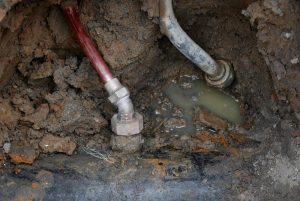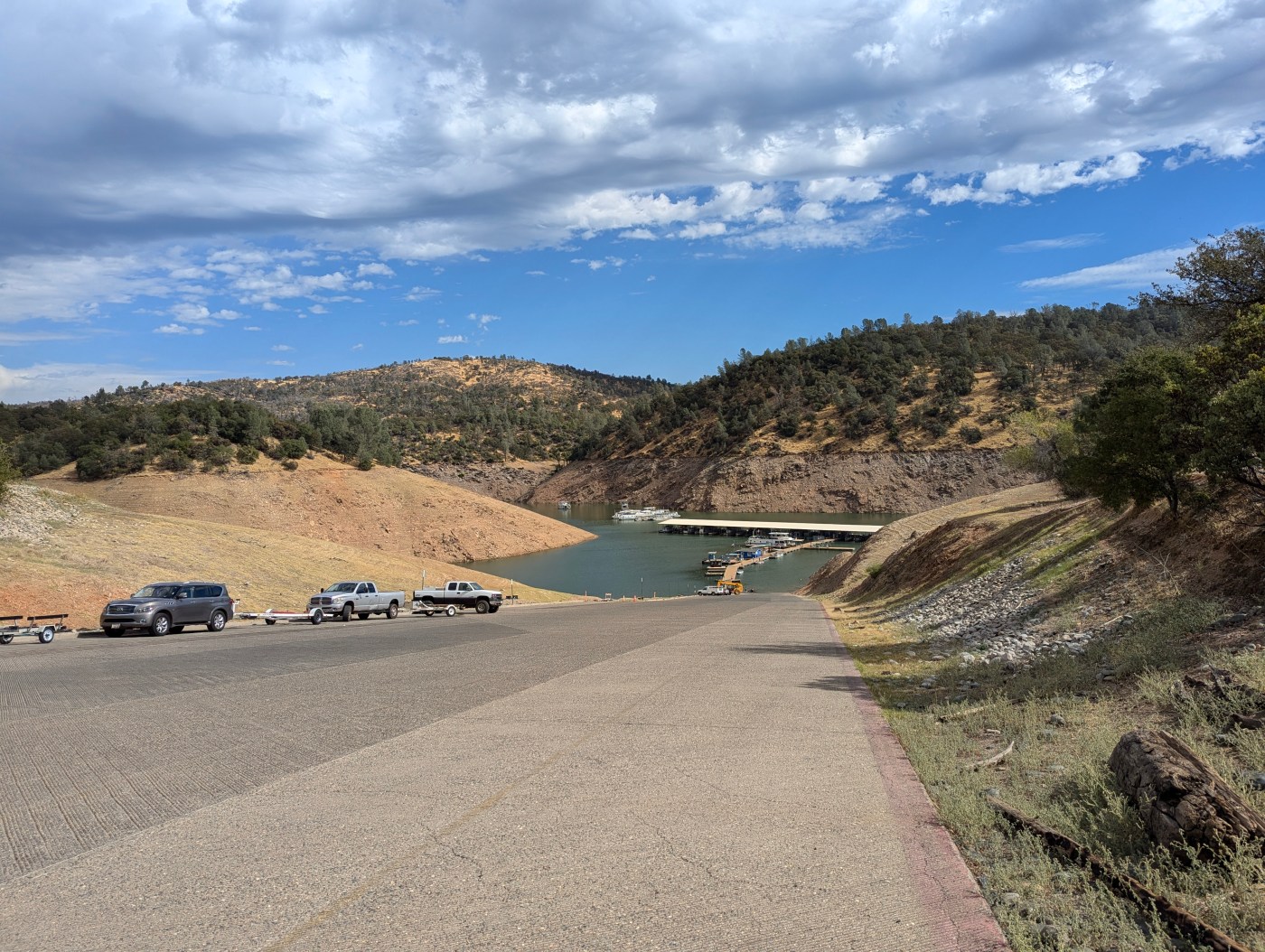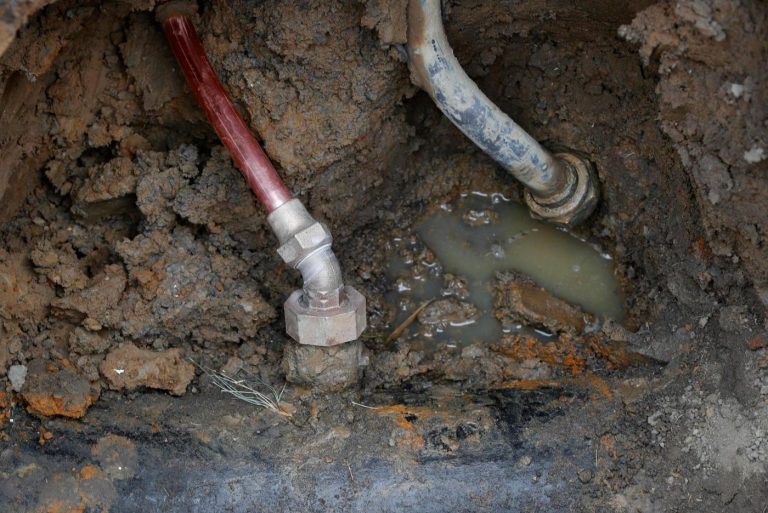OROVILLE — Lake Oroville’s water level peaked early this year but has fallen drastically compared to 2023.
By early June 2024, the lake had reached its capacity from snow runoff left by late winter and spring storms but by Monday the water levels teetered around 775 feet and showed a downward trend. This is juxtaposed by 2023 when the levels didn’t go below 800 feet and had much less of a steep decline by the end of the summer.
Winter weather had a powerful impact. In previous drought years as recent as 2022, water levels dropped to dismal levels with the lowest in recent years going to October 2021 when it fell below 630 feet.
The area behind the Oroville Dam spillway was dry Monday, Oct. 7, 2024 near Oroville, California. (Jake Hutchison/Enterprise-Record)
The winter between 2022 and 2023 brought significant rainfall and snow, said Jason Ince, a spokesperson with the California Department of Water Resources.
“Both precipitation and peak snowpack were significantly larger in 2023 than in 2024,” Ince said. “Although the Northern Sierra was above average in both years, the peak Northern Sierra Snowpack in 2023 reached 199 percent of the historic April 1 average, versus 122 percent in 2024. Also, storage in Lake Oroville is still 97% of average for this date.”
Total releases from the lake have also increased in 2024, Ince added.
“Overall releases from Oroville have been higher in 2024 than in 2023, although the range of release values has been essentially the same for both years,” Ince said. “DWR held releases up around 8,000-9,000 cubic feet per second for a longer period in 2024 to support Delta flow requirements.”
On Monday, the spillway was mostly dry with trucks and crews on the concrete conducting maintenance. The portion of the lake directly behind the spillway was also dry with traffic able to drive down onto the roadway.
Ince said current releases from the lake come out to 5,000 cfs, none of which are routed through the spillway but rather alternate channels such as through the Thermalito Afterbay, from which 4,200 cfs are released. The remaining releases are being sent through low flow section of the Feather River which runs through the city of Oroville.
“Water releases from Oroville Dam depend on a variety of factors including weather, flood control, and water delivery and environmental regulation requirements,” Ince said. “We are heading into the wet season months in which DWR is required by the U.S. Army Corps of Engineers to maintain a set amount of storage space in the reservoir to capture future rain and snowmelt runoff to provide flood protection to downstream communities. Water levels at Lake Oroville are expected to get lower as we approach the fall and winter months to reserve the flood control storage space required by (the U.S. Army Corps of Engineers.)”
Inflows into the lake over the past week were estimated at between 2,000 and 2,500 cfs.
Lake Oroville was reported at around 775 feet on Monday, Oct. 7, 2024 near Oroville, California. (Jake Hutchison/Enterprise-Record)
Groundwater
DWR issued a press release on Monday claiming that groundwater conditions have remained stable over the past year.
Recent drought conditions that worsened in 2021 led to hundreds of dry and drying residential wells throughout the Sacramento Valley. Areas such as Glenn County, particularly around Orland, had hit a crisis point during which time local organizations and DWR partnered to come up with new water delivery systems as well as a plan to connect rural homes to Orland’s water system.
A million-gallon tank in Orland is currently underway to be completed next year.
Related Articles
‘A decade of extremes’: California DWR preps for possible intense weather conditions
$1.5 billion project to expand major Bay Area reservoir falls through
Lake Oroville levels remain higher than previous years
Ecological Reserve calls for action on Big Chico Creek sediment
Oroville Dam spillway undamaged by Thompson Fire, DWR says
However, with the considerable rainfall in 2023, signs of cautious hope began as wells started to slowly refill.
DWR’s release said fewer dry wells have been reported over the past year as opposed to previous years.
DWR Deputy Director of Sustainable Water Management Paul Gosselin issued a statement that gave credit to the Sustainable Groundwater Management Act that was put in place a decade ago.
“With a better understanding of groundwater conditions, state and local agencies can make more informed management decisions that will lead to a sustainable groundwater future under SGMA,” Gosselin said. “One of the most significant accomplishments in the first ten years of SGMA has been a great improvement in groundwater data collection and sharing.”
Weather ahead
While the heat has been slow to subside this year, a mild cooling trend is underway for the coming week.
Katrina Hand, a meteorologist with the National Weather Service’s Sacramento office, said temperatures are expected to drop into the 80s as the week goes on after Monday once again hit the triple digits.
“We do still have unseasonably hot temperatures but we do have a gradual cooling trend over the week, though still above the climatological trends for this time of year,” Hand said.
Tuesday will likely still stay in the 90s but temperatures are set to drop into the 80s in the valley starting Wednesday and through Friday.
Hand said Paradise and other nearby foothill areas can expect to be as low as the high 70s by Friday.
“We’re getting closer to normal by the end of the week,” Hand said.













+ There are no comments
Add yours